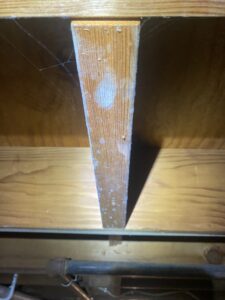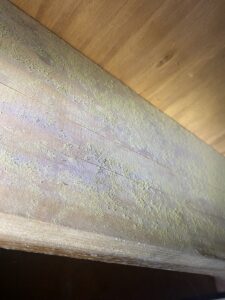Basement Humidity Control – Preventing Moisture Issues

Basement Humidity Control
Many of the projects that MB consults on involve moisture damage and fungal growth resulting from humidity condensation. Basement walls are normally cooler than the surrounding surfaces, which attracts the moisture in the air to condense on these surfaces. Repeated condensation or heavy condensation during periods of elevated humidity can result in moisture damage to materials and mold growth. Concerns about climate control in basements should be discussed with a qualified HVAC professional, but there are preventative measures that a homeowner can take to decrease the relative humidity (RH) and minimize the amount of condensation on basement surfaces.
Supplementary Dehumidification
Even in homes with central air conditioning, the humid months in the summer can cause elevated humidity levels in a basement, as can incidents of water intrusion. Homes without central air conditioning are more at risk. The use of a dehumidifier is an excellent way to manage the humidity levels. Modern units can be set for a specific maximum RH% and will turn on a run when the RH% levels climb above the setting. Most units also have the option to attach a drain hose to drain the condensed water into a floor drain. Slightly more expensive units include a pump which will help drain the tank to an elevated drain such as a laundry sink. The optimal RH for a basement is between 35% and 60% RH. Below 35% can cause discomfort to some people and above 60% is more conducive to fungal growth. Dehumidifiers vary by size as well. Here is an excellent article from Consumer Reports about selecting the right size dehumidifier for the space. Consumer Reports – Dehumidifier Size
Air Flow/Circulation
In addition to dehumidification, air circulation is very important to managing humidity and condensation in the home. Increasing the circulation within a basement will assist in two ways. It will help deliver more air to the dehumidifier which will allow it to process more moisture and the air flow across the surfaces will deter condensation on those surfaces. It is important to inspect for signs of fungal growth before establishing air flow. If mold growth is present, the air flow will actually increase the chance of distribution of mold spores and causing spore contamination to other areas of the basement or the building.
If you have specific questions about fungal growth or moisture issues in your home or are interested in mold testing to confirm that the environment in your home is normal fungal ecology, please reach out to schedule a consultation.

